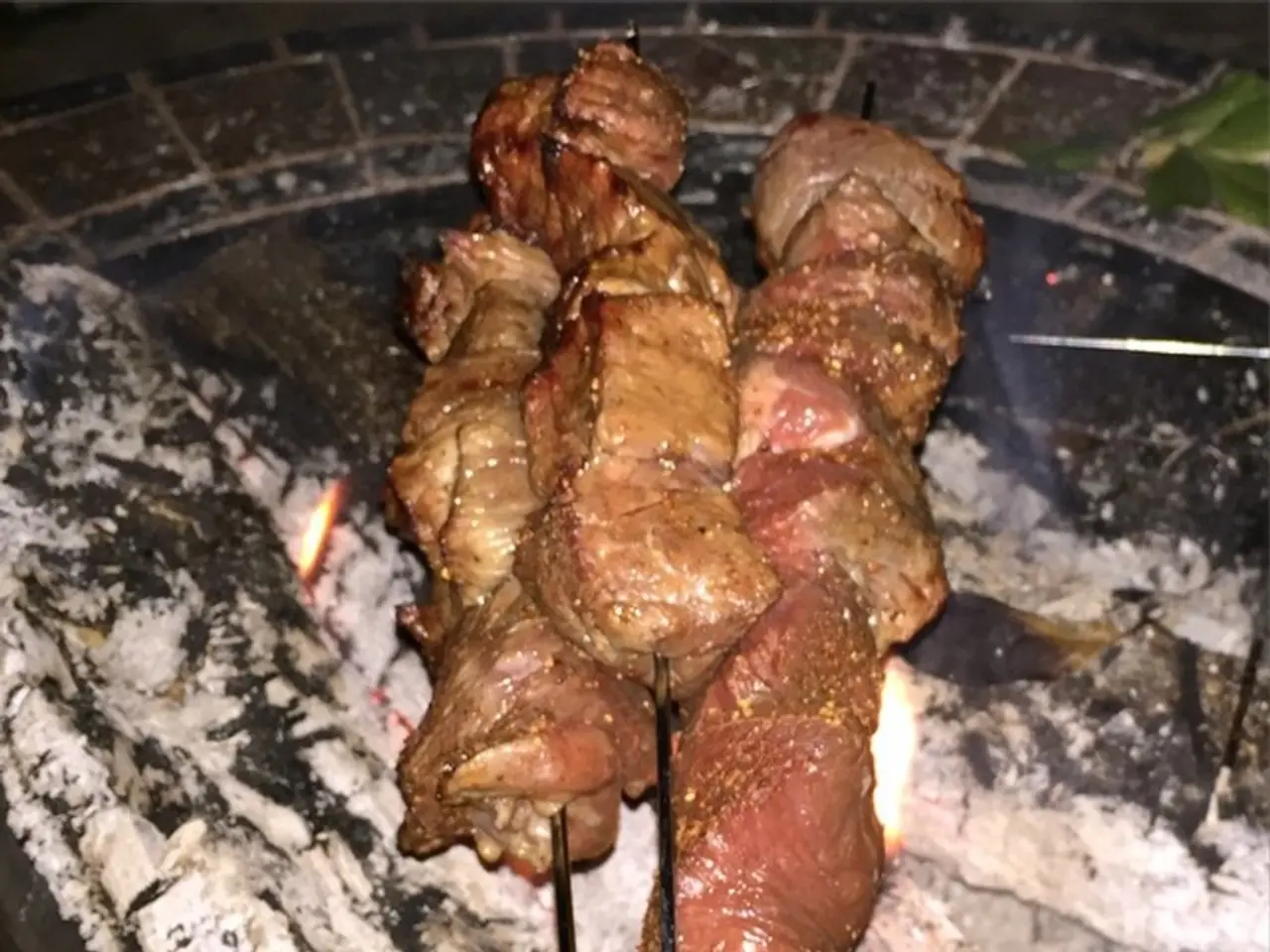Detailed Tutorial on Cultivating and Storing Onions: Insights for Successful Onion Growth and Preservation
Perennial onions, such as the Walking Onion and Welsh onion, are a great addition to any garden, requiring minimal maintenance and coming back year after year. These onions propagate themselves by dropping flowerheads randomly around the plant, creating new plants in the process.
Onions are categorized into long-day, short-day, and day-neutral onions, depending on the number of daylight hours required for bulb production. The choice of onion variety for home gardens depends primarily on daylight hours and climate zones.
Short-day onions, such as the Texas Sweet White and Red Creole, are best for warmer climates with mild winters (USDA zones 7-10). They require about 10–12 hours of daylight and are typically planted in fall or early winter and harvested in spring.
Intermediate-day onions, like the Walla Walla Sweet and Candy Onion, suit moderate climates (zones 5-7). These onions need 12–14 hours of daylight and are known for their versatility, producing sweet bulbs in about 90-100 days with 12-14 hours of sunlight.
Long-day onions, such as the Yellow Sweet Spanish, Yellow Spanish, and Red Brunswick, thrive in cooler and northern regions (zones 3-6). These onions require 14–16 hours of daylight and are planted in early spring for late summer or fall harvests.
Bunching onions, like the Evergreen Hardy White and Tokyo Long White, do not form large bulbs and can be grown throughout the season for fresh green tops.
For best results, plant long-day onions early in spring to ensure larger bulbs as bulbing begins when daylight reaches about 14 hours. Soil fertility, watering, and fertilizer also strongly affect bulb size.
Scallions, also known as green onions, are an excellent choice if you have difficulty growing onion bulbs or are simply interested in greens. They can be planted early in the spring and will continue to grow throughout the summer, giving you a constant supply of fresh greens.
Before storing onions, they need to be cured for several weeks to ensure they are dry. Whole onions can be frozen and stored in a place that stays slightly below freezing, such as a shop or garage. Protecting against onion maggots with insect mesh can be beneficial.
It's not necessary to keep onions weed-free, but it's important to ensure that the weeds don't shade the plants from the sun. Onions can be grown either from seeds or sets. Onion sets are small onions that are grown from seeds but not allowed to mature. They are already in their second year of growth, but since they are small, they are unlikely to go to seed.
The sweet or Spanish onion is a type of vegetable onion that is excellent for adding to salads, eating raw, or making onion rings. They are not as resilient as cooking onions, require more space to grow, and do not store as long. Shallots have a sweeter taste than onions and are a worthwhile addition to any diet. They can be grown from sets or seeds.
References:
[1] https://www.gardeningknowhow.com/edible/vegetables/onion/how-to-grow-onions.htm
[2] https://www.almanac.com/plant/onions
[3] https://www.gardeningknowhow.com/edible/vegetables/onion/long-day-short-day-intermediate-day-onions.htm
[4] https://www.gardeningknowhow.com/edible/vegetables/onion/candy-onion-growing-guide.htm
- In cold climate zones, growing compost from kitchen scraps can help create nutrient-rich soil suitable for a variety of seeds, including onions.
- Gardening enthusiasts may find preserving onions for food-and-drink purposes an appealing addition to their lifestyle, with greenhouse or home-and-garden recipes available online.
- When planting onions in your garden, specify the type to match the climate requirements, such as long-day onions for cooler regions.
- Scallions can be a great substitute for onions after harvesting in your garden if you encounter difficulty growing onion bulbs during the summer.
- After the harvest season, appropriate storing techniques are essential to preserve onions for future cooking, like placing them in a cool, dry place or freezing them in a slightly below-freezing location.
- For those living in warmer climates such as zones 7-10, cultivating short-day onions like the Texas Sweet White in a garden with ample sunlight would yield a delicious harvest.
- You can enhance your garden's yield by carefully controlling the watering and fertilizing of onion plants to promote bigger bulbs in long-day onion varieties.
- For individuals living in moderate climates (zones 5-7), growing versatile intermediate-day onions like Walla Walla Sweet can offer an attractive option for cooking and home-and-garden use.




